The Champions League final is over, and all of Europe's major leagues have finally finished their seasons. After a nearly 10-month campaign, the offseason is finally here.
Psych! There is no soccer offseason!
Soccer's best (and sometimes worst) quality is that it never, ever, ever stops. Once you're hooked, there's always something to track, and that's true even when the major European competitions have ended. For starters, we've had a number of international competitions going on (UEFA Nations League, Concacaf Nations League, Euro qualification, etc.), and somehow qualification for next year's UEFA Champions League begins in just a couple of weeks. But even beyond that, leagues in North and South America, Asia and Northern Europe are just hitting their respective strides.
- Stream on ESPN+: LaLiga, Bundesliga, more (U.S.)
With that in mind, consider this a hipster's guide to summer club soccer. The stakes may be lower -- if you're a Europe-first fan, anyway -- but there is still a lot of fun to be had. Here are 15 teams, from 10 different leagues, that you should check out on various streaming services if you're in the mood to continue enjoying the beautiful game.
USA

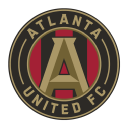
Columbus Crew and Atlanta United
Primary streaming option: AppleTV+
I'm writing this with an American soccer fan in mind, and I'm going to assume (or hope) that an American fan is already pretty familiar with the MLS landscape. You might already know how the season has thus far taken shape -- FC Cincinnati has burst out to a huge lead in the race for the Supporters Shield (despite merely solid stats), newcomer St. Louis City is slowly wafting back down to earth but still leads the West, LAFC and the Seattle Sounders seem to be the most statistically sound teams and Lionel Messi's future team, Inter Miami, absolutely stinks.
If you've got a geographic allegiance to a team, that's great, but if you don't and you're just looking for a team to entertain you on a Saturday evening, check out Columbus and/or Atlanta.
Columbus is your prototypical pressure-and-possession team. Their 58% possession rate is the highest in the league and they generate 34.0 high turnovers per game in open play, fifth in the league. They are also scoring two goals per game, thanks both to the style of play and some recent torrid finishing from veterans Lucas Zelarayan (eight goals from shots worth 5.0 xG) and Christian Ramirez (six goals from shots worth 3.4).
Even better from an entertainment perspective, Columbus has also been vulnerable to the type of counterattacks this style can allow, and they're giving up 1.4 goals per match. You're going to see transition opportunities in both directions.
The same goes for Atlanta, which plays a similar style with similar results. The primary differences: (1) The United aren't quite as good at it (they're scoring fewer goals, despite the best efforts of Georgios Giakoumakis, and they're allowing even more) and (2) their home games are absolute events. Their average attendance this season is 45,702, more than 13 Premier League teams averaged this past season, and the crowd noise and artificial turf make Atlanta games unique experiences.

Portland Thorns
Primary streaming option: Paramount+
The NWSL only has 12 teams, but you've got quite a bit of stylistic variety to take in. The league-leading San Diego Wave don't press much and build slowly in attack but create high-quality chances through the forward duo of 18-year old Jaedyn Shaw (16 chances created) and 33-year old Alex Morgan (five goals). The other leaders, the Washington Spirit, press a lot more, play well in transition and create even better shots, on average, than the Wave.
I'm partial to Portland, however. The Thorns, three-time NWSL champions, have the best underlying stats in the league (their +1.1 xG differential per match is nearly double that of anyone else), and they do it with absolute aggression. They create the second-most high turnovers and generate by far the most shots from it; in fact, they just take a lot of shots, period, and the duo of Sophia Smith (six goals) and Crystal Dunn (five) puts a lot of them in the net, too.
I mean, Smith and Dunn! And Morgan Weaver! And Christine Sinclair! You're watching that!

Pittsburgh Riverhounds
Primary streaming option: ESPN+
The USL Championship occupies the second division of the U.S. soccer pyramid. It offers similar styles to what you see in MLS, with the added bonus of particularly unique venues. There are lots of minor league baseball stadiums, and some of them are pretty full. New Mexico United plays at Isotopes Park (home of the Triple-A Albuquerque Isotopes), and they draw over 10,000 per game for a mid-table team. The ambiance is charming.
As tends to be common with lower-division leagues, however, the best teams tend to be the ones that make the fewest mistakes. Reigning champion San Antonio FC, for instance, defends the length of the pitch, prevents any and all shots and hopes to capture opponents out of position for strong transition attacks a couple of times per match. There aren't a ton of high turnovers overall, and, frankly, there aren't a ton of shots -- teams average just 11.4 shots per match. Pittsburgh personifies this league style well, averaging a paltry 9.3 shots.
Thanks primarily to the work of Cameroonian Albert Dikwa (27 shots, nine goals) and 35-year old Jamaican Kenardo Forbes (22 chances created, five assists), however, nearly every shot the Riverhounds take is of high quality, and a lot of them find the net. They have the fourth-most points in the league right now with this style, and combined with the general Pittsburgh aesthetic -- black and gold kits, a gorgeous and quaint home stadium that overlooks a river -- this is a pleasant team to take in on a Saturday evening.
Brazil
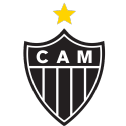
Atletico Mineiro
Primary streaming option: Paramount+
Brazil's Serie A has plenty of issues. Finances often oscillate between murky and dire, a lot of the league's best players are scooped up by European teams the moment they emerge, and of the last three Brazilian teams to reach the FIFA Club World Cup, two lost immediately -- Flamengo fell to Al-Hilal this past February, and Palmeiras lost to both Tigres and Al Ahly in 2021.
Still, I have found myself slowly falling in love with Brazil's Serie A all the same. First, the crowds are great. Eight of the league's 20 teams average at least 30,000 in attendance, and each stadium has a unique personality and layout. You get sucked into the atmosphere. Second, this is still the best club soccer South America has to offer. Brazilian teams have occupied both spots in the Copa Libertadores final for three years running and have produced three semifinalists and five quarterfinalists in each of the last two. These teams take lots of shots (not all of them good) and press with their forwards. There is plenty of drama in the fouls-and-cards department, too, if that's your thing.
To me, Atletico Mineiro personifies everything fun about Brazilian soccer, right down to their brilliantly frantic in-game tweets.
⚽GOOOOOOOOOOOOOOOOOOOOOOOOOOL DOOOOOOOO GAAAAAAAAAAAAAAAAAAAALOOOOOOOOOOOOOOOOO!!!!
— Atlético (@Atletico) June 10, 2023
PAAAAAAAAAULIIIIIIIIINHOOOOOOOOOO MARCA PARA O GAAAALOOOO ABRIR O PLACAR!!!🐔#VamoGalo #CAMxRBB🏴🏳️ pic.twitter.com/aSAn4nBSsq
The 2021 league champs draw over 30,000 per game and boast a recognizable squad featuring players like goal-scorer Hulk (who's approaching 400 career goals), on-loan Bayer Leverkusen forward Paulinho, one-time LA Galaxy winger Cristian Pavon and up-and-coming left back Rubens. They are both good and delightful, even if manager Eduardo Coudet just resigned.

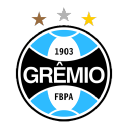
Fluminense and Gremio
It can sometimes feel like almost every big, European soccer team plays in a similar way. You have to press. You have to dominate the ball. You need to space the field accordingly. Every team has its own unique variations, of course, and occasional exceptions apply, but positional play, as brought most to life by Manchester City and their coach Pep Guardiola, is certainly regarded as the style of the day.
Positional play assures that players fill certain zones of the pitch to assure proper spacing, passing options and, if established properly, passing options. But from the moment a dominant style is accepted, some teams and managers attempt to find ways to counter it. And some coaches -- Fluminense's Fernando Diniz and Gremio's Renato Gaucho, to name two, are tinkering with the idea of countering full-pitch spacing by overloading smaller areas. And if the positional system is based around concepts and roles first, a potential counter could be building systems around individuals and their relationship.
You can read plenty about this concept of relationism (this Medium piece is a good starting point), and if you want to see its nascent form, search out Fluminense and Gremio matches.
This isn't an anti-possession style by any means -- Fluminense leads Serie A with a 62% possession rate, though recently promoted Gremio is at only 44% (they were at 51% in Serie B last season). Instead, it's simply a different attempt at both possessing the ball and positioning yourself well to counter-press when you lose possession.
It is a work in progress. Fluminense and Gremio are currently fifth and sixth in Serie A, respectively, but they've been a bit fortunate -- they rank 20th and 19th in shots allowed per possession and 19th and 18th in xG allowed per match. When they can't establish control, they allow their opponents to do so comfortably. Still, if you're on the hunt for innovation, these two clubs are fun starting points.

Sometimes you don't need to overthink things: Palmeiras is good, their crowds are big, and they've got Real Madrid-bound Endrick -- the 16-year old has scored six goals in his last 13 matches and twice in the last week. That's reason enough to check them out.
😍⚽️ ¡Histórico, Endrick! Con 16 años y 322 días, se convirtió en el jugador más joven en marcar con @Palmeiras en la CONMEBOL #Libertadores.#GloriaEterna pic.twitter.com/AEEz6GlSVS
— CONMEBOL Libertadores (@Libertadores) June 8, 2023
Elsewhere in South America
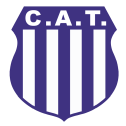
Talleres de Cordoba
Primary streaming option: Paramount+
I'm going to be honest: Argentina's Primera Division is a bit of an acquired taste. Compared to Brazil's Serie A, there have been 13% fewer shots and 20% fewer goals this year; teams are barely averaging over one goal per match at the moment. Defensive pressure is constant, and nearly every team in the league plays a ridiculously direct style compared to what you're used to seeing in Europe's major leagues. Somehow, it's even more intense without the scoring (and as with LaLiga this past season, rarity means every goal is incredibly meaningful).
Thus far in 2023, however, Talleres has cracked the code, scoring 1.8 goals per match. While only 7.1% of the league's shots have been worth 0.3 xG or more (that number tends to be closer to 8-9% in Europe's major leagues), Talleres is at 13.2% this season. Their average of 0.14 xG per shot is easily the league's best, and they've achieved it without an inordinate number of penalties. Veteran forward Michael Santos has been a cheat code of sorts, averaging 0.23 xG per shot and scoring 12 times in 20 matches.
This is not historically one of Argentina's most successful clubs, but Talleres are currently second in the table behind only heavyweight River Plate. They're generating offense in an unfriendly climate, and they're not overextending themselves to do it.

Club Bolivar
Primary streaming option: Options are minimal, though the Copa Libertadores and Copa Sudamericana are prominent on the beIN family of networks
Okay, you're probably not going to be able to regularly settle in to (legally) watch the Bolivian Primera Division on your streaming device of choice. But Club Bolivar has been an absolute delight to follow in the Copa Libertadores this season. They drew a pretty tough group -- Palmeiras, Ecuadorian heavyweight Barcelona SC and Paraguayan heavyweight Cerro Porteno -- but they've pulled 12 points from five matches to clinch advancement to the knockout rounds.
Their secret weapon: home field advantage. As in, their home field has an elevation of nearly 12,000 feet! They have jumped on opponents as they have tried to find their lungs, scoring in the fifth minute against Cerro Porteno and in the 20th in a 3-1 win over mighty Palmeiras. Their colors (sky blue on darker blue) are gorgeous, their style is fun and their opponents are sucking wind from the first minute of the match. What's not to like?
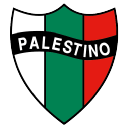
Christopher Hylland's "Tears at La Bombonera" is one of the most delightful soccer books I've read in recent memory. The approximate premise: He lived in South America for six years and watched a lot of matches in a lot of places. That's it. And it works.
Throughout the book, Hylland shines light on clubs formed long ago by groups of immigrants, many from throughout Europe. Palestino, however, was formed by -- you guessed it -- members of Chile's Palestinian community, and its red, green and white colors remind you of that. Success has been marginal through the years (they've won two league titles, the last coming in 1978), but they're currently faring pretty well in the Copa Sudamericana, well positioned to make the knockout rounds.
Asia


Consadole Sapporo and Yokohama F. Marinos
Primary streaming option: YouTube
Within the U.S., the J. League broadcasts many weekly matches for free on its YouTube channel. This has been one of my favorite discoveries of the spring. I'm a Bundesliga admirer and J. League novice, and let's just say that it makes sense that so many Japanese players -- Ritsu Doan (Freiburg), Ko Itakura (Borussia Monchengladbach), Takuma Asano (Bochum), Daichi Kamada (Frankfurt, on his way to AC Milan) -- have thrived in Germany.
The styles of play overlap considerably.
High-pressing? Yes. Transition goals? Absolutely. Pedal-to-the-metal activity levels? Hell yeah. Solid crowds that sing and/or play music nonstop in the background? Yep. The J. League is an absolute blast. Immerse yourself early on some Saturday or Sunday morning, and watch your mood brighten immediately.
I'm listing two Japanese teams here: the best team at the moment and the most extreme team.
Yokohama FM is the former. The seven-time league champs are owned by the City Group, and they boast plenty of Manchester City-esque qualities -- heavy possession (58%), among the longest possessions in the league, etc. -- albeit without the extreme money advantages. The duo of Brazilian veterans Anderson Lopes and Elber has combined for 18 goals and nine assists in 17 matches. They're worth your time.
Consadole Sapporo, on the other hand, demands your time. They take aggressive soccer to its extreme. They've scored the most goals in the J. League and allowed the thirdmost. They rank third in average xG per shot and a distant last in xG allowed per shot. They are among the best teams in the league in transition attack and easily the worst in transition defense. They make things happen, for better and frequently worse. No lead is safe in either direction. No one should play like this, and I love that they do.

Ulsan Hyundai
Primary streaming option: KLeague.com
A constant presence in the K League's top three, the Tigers won the league last year and the Asian Champions League in 2020, and they're running away with the title this season -- they're up 13 points just past the midway point -- thanks in part to the ultimate late bloomer. Joo Min-kyu, 33, played for various second-division and low-rung first-division teams for years but led the K League in scoring for two years at Jeju United and has thrived since joining the league's big dogs in 2023. It's a couple of extra steps to watch the K League as opposed to the J League above, but the product is similarly entertaining.
Northern Europe

Bodo/Glimt
Primary streaming option: ElevenSports and One Football
There is still European action going on, but you have to head north to find it. And once you reach Norway, keep going north for a while longer to reach Bodo. It's pretty far up there, and man oh man, what a hipster find this club has become. Not a historical heavyweight in Norway, Glimt have surged in recent years, winning the Eliteserien in 2020 and 2021 and finishing second in 2019 and 2022.
Their success has come from a combination of strong continuity, chemistry and a relentless attack. They beat Roma twice and stomped Celtic on their way to the Conference League quarterfinals in 2022, and they narrowly missed out on their first Champions League bid last summer, falling in extra time to Dinamo Zagreb in the final playoff round.
Bigger clubs have taken away some of their better players in recent years -- Jens Petter Hauge went to AC Milan in 2020, Victor Boniface to Union St. Gilloise in 2022 -- but they keep plugging that money into scouting and acquisition and producing stronger rosters. They're 10 points ahead of the field after just 11 matches this season, and star scorer Amahl Pellegrino has outscored five league teams by himself. This might be the best version of what is quickly becoming Norway's best club.
